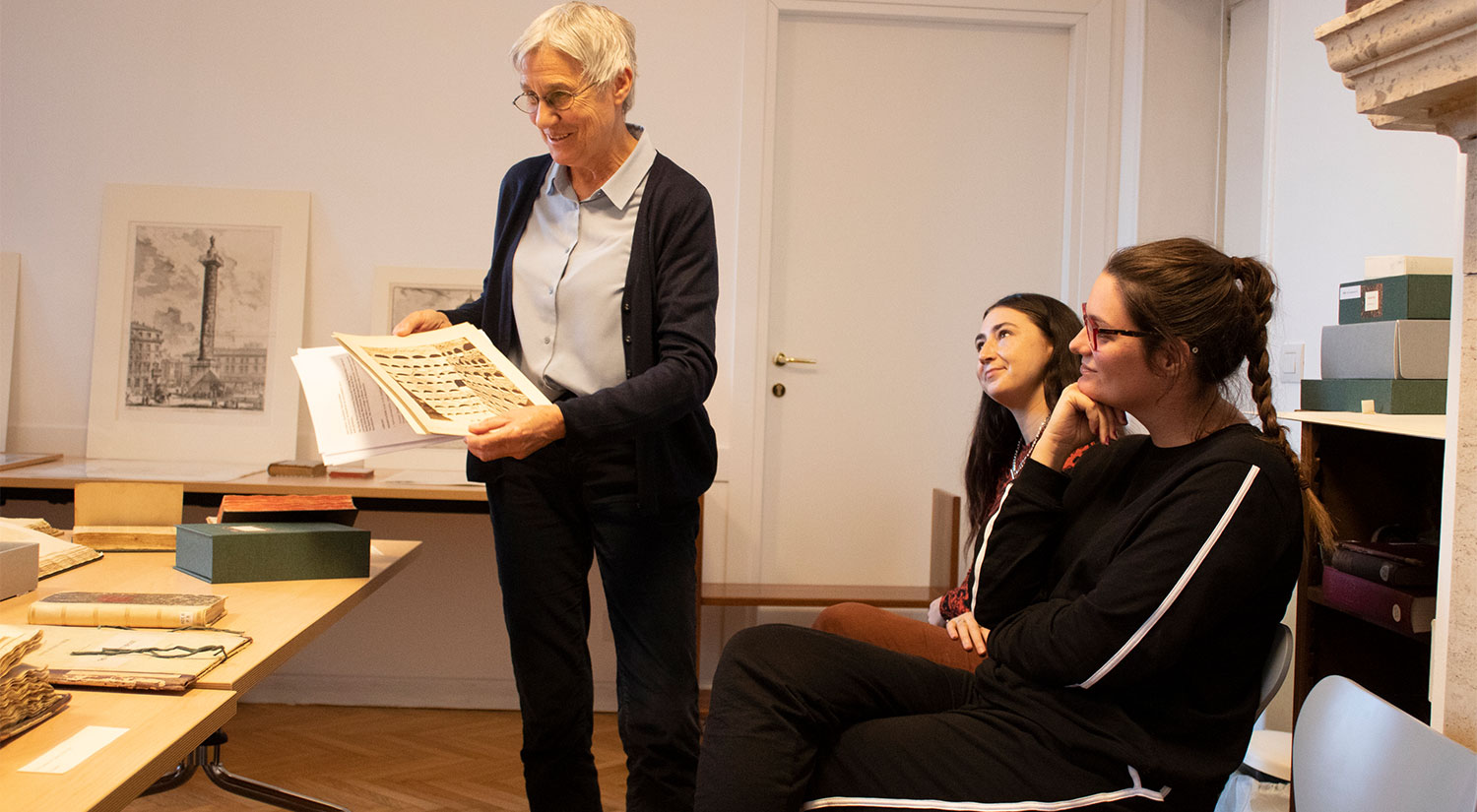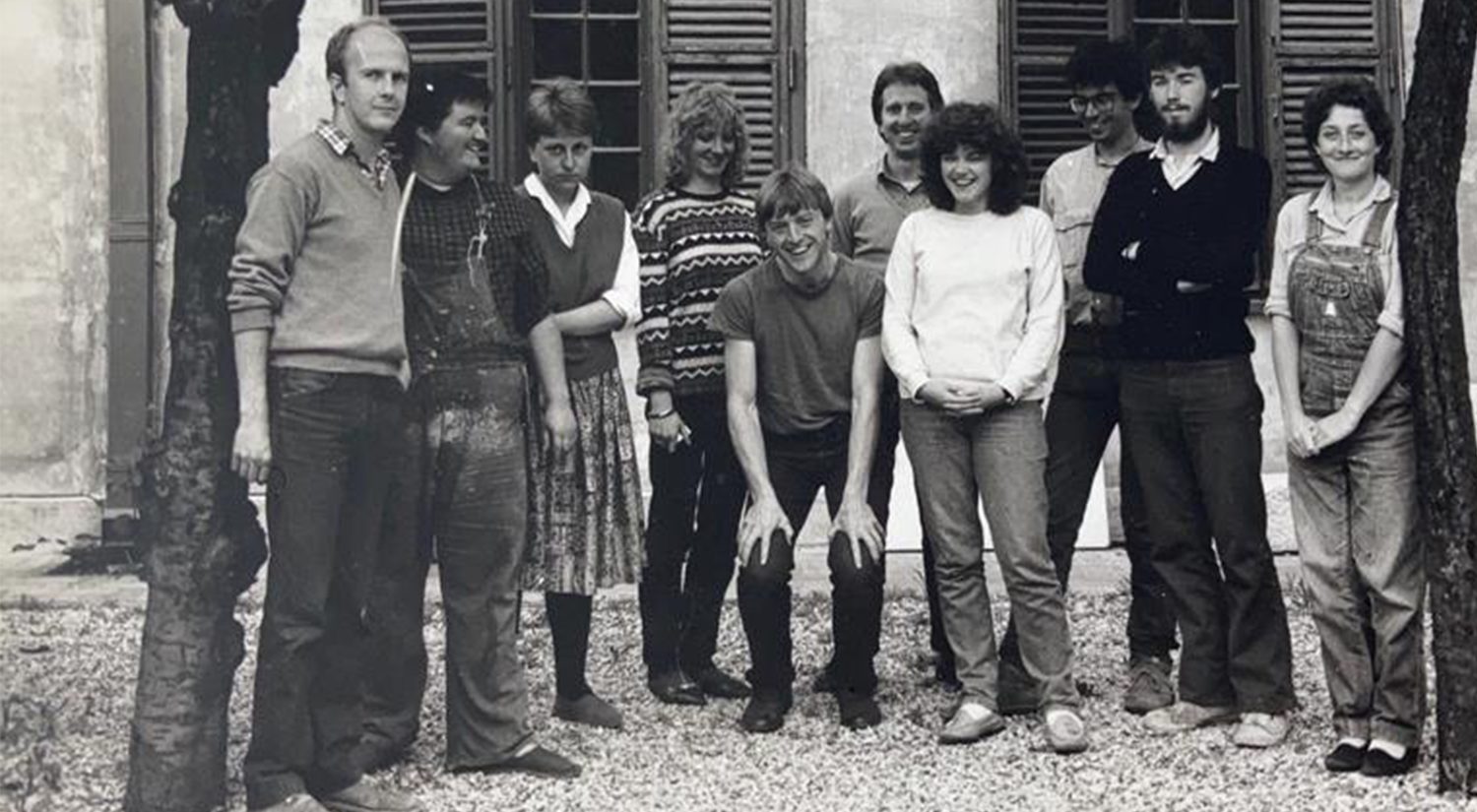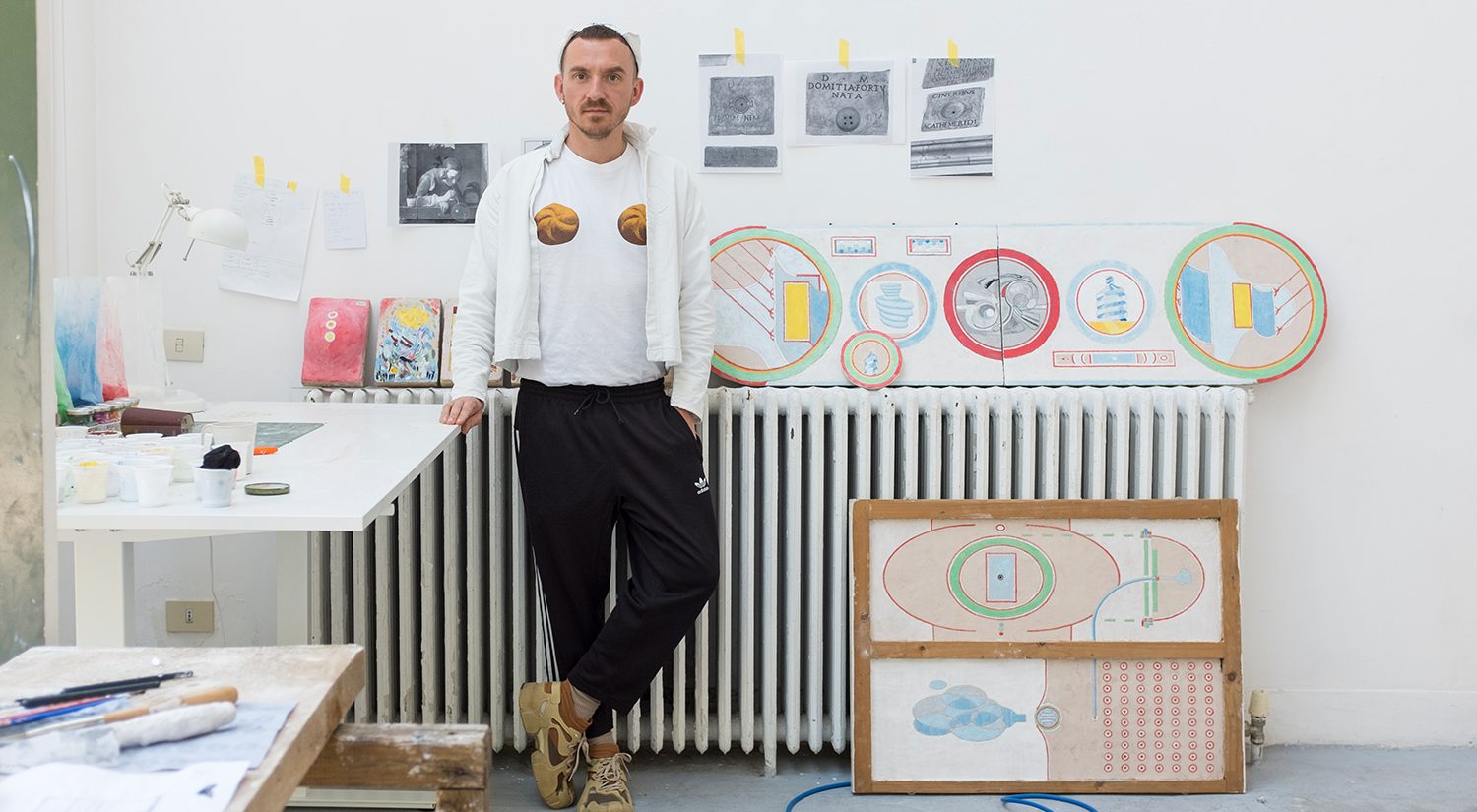Valerie Scott, former BSR Librarian, retired in August 2021 after 40 years in post. Valerie’s immeasurable contribution to the BSR, its library and readers, is well recognised by all those who were lucky enough to cross her path in past decades and benefit from her warm welcome and deep knowledge of the collections. We are delighted to share here some personal testimonies of the value and significance of her work.
Clare Hornsby, BSR Research Fellow
I first met Valerie at BSR in 1996 having arrived in Rome with my family in July of that year. Andrew Wallace-Hadrill had asked me to create a programme of humanities – principally art history – events including some related to the 1997-8 exhibition in Rome, Grand Tour: the Lure of Italy, co-curated by an old friend of the BSR, Ilaria Bignamini, thus my first experiences of the Library and of Valerie were of searching for material on that subject. I immediately found the Library to be not only one of the most welcoming environments in which to think, research and write but also in many ways the perfect library for the subject. There is no doubt that the library has a brilliant collection of books and journals on the subject of Rome, which is exactly as it should be, thereby fulfilling the core mission of the School.
Over the years I began to appreciate that the heart of this environment was created by Valerie herself and the collaborative team she gathered around her in the archive and the library. Valerie was always looking for people who could help BSR and themselves at the same time by doing the research they loved to do; she saw in me someone who was eager to take on new projects in the field of 18th-century studies, so the first project she proposed to me herself was to create a basic catalogue-list of the newly-restored prints by Piranesi – over 200 of them – a task which I was happy to undertake with the assistance of archivist Alessandra Giovenco, then in her first years working at BSR. Working with that print collection created in me an enormous love and respect for Piranesi and it is fitting indeed that the very last project that Valerie and I set up together in 2021 is to create a full catalogue of the Giovanni Battista Piranesi prints, now being published online on the Digital Collections website; groups of the prints being shown in annual exhibitions, researched by myself and Dr Caroline Barron, former Rome Fellow and now Assistant Professor in the Department of Classics and Ancient History at the University of Durham. So, the genius of Piranesi has bookended my research collaboration with Valerie.
Around 1998 Val proposed I work on an unpublished sketchbook by French 18th-century landscape artist Nicolas-Didier Boguet which, along with those Piranesi prints and so many of the rare books in the library collection, is part of the Thomas Ashby heritage which so enriches the library. It became a wonderful project of research and writing. The book, Landscapes of Suburban Rome, was published with excellent facsimile photographs of each of the watercolour sketches in the book.
While working on that book, Valerie allowed me to spend day after day in the Rome Room, a tiny space shelved floor to ceiling, where all the Ashby rare books on Roman topography, historic guidebooks etc were kept. It was a heavenly experience to be able to sit in there and pull books off the shelf ad lib. Valerie’s generosity to me and other scholars had no limits; it was clear that she saw her job of facilitating research as a personal commitment as well as part of her professional role. And at the same time she was also dedicated to the more day-to-day tasks of keeping that library up-to-date; many quiet afternoons I would walk past the library office to see her absorbed in journals and reviews choosing books for acquisition.
Our connection through the Library has been one of over 25 years and through all the ups and downs of life it has remained a point of reference for me, a place to work that feels like home. Although Valerie has now retired, the Library atmosphere retains much of its charm thanks to the continued presence of her colleagues, smiling their welcomes to researchers such as myself at each new visit.
The work that Valerie did at the library was truly remarkable; in the best sense she was always a dedicated servant of the BSR as an institution, considering its welfare and its flourishing above all things. She has been much missed since she left in the summer of 2021 but I am delighted to look forward to a new phase of research collaborations with the arrival of Dr Raphaële Mouren who is joining from the Warburg Institute Library in London. Although BSR is a much smaller library than the Warburg, it could claim to be its match in idiosyncratic brilliance; Valerie’s contributions to the Library over the years have helped to build it – and to build its high reputation.
Paul Weston, Member of the BSR’s Faculty of Archaeology, History and Letters
I met Valerie Scott shortly after she joined the BSR. I was introduced to her by Librarian Luciana Valentini on the occasion of a meeting which specifically addressed the issue of collaboration among some of the libraries of the Unione Internazionale degli Istituti di Archeologia, Storia e Storia dell’arte. The opportunity to create a library system with a union catalogue and to rationalise the policy of acquisitions had been envisaged long before. In fact, it was considered an essential service for the community of scholars of different countries who came to Rome for their research. This endeavour long precedes the possibilities granted by today’s computers to set up a network of libraries. The idea was that each library should hold a copy of all the records created within the network, so that users would know who had what.
Over the course of time, these meetings were attended by librarians from an increasing number of institutions. Meanwhile, around 1985, the Prefect of the Vatican Library, the Dominican Father Leonard Boyle, decided that the Vatican Library should be provided with new equipment to prolong the intention of Pope Nicholas V that it should act “pro communi doctorum virorum commodo” (30th April, 1451).
In March 1990, Valerie, now Librarian at the BSR, organized a meeting to discuss cooperation, attended by the representatives of a number of Roman libraries. Valerie’s direction was truly strategic, as she stressed the opportunities provided by joining the Vatican system. At the same time, she reassured all libraries that admission would take place on equal basis regardless of the size of the library. Furthermore, the standards and traditions of the various countries would be catered for in establishing bibliographic criteria.
The respect for Valerie, as well as for the needs of the other libraries for which she was spokeswoman, meant that the Vatican staff worked to create a bilingual subject catalogue. As for the headings, Vatican rules were to be used in parallel with Anglo-American cataloguing norms. Finally, in February 1992, the URBS network was officially launched by five libraries (American Academy in Rome, British School at Rome, Danske Institut for Videnskab og Kunst i Rom, Norske Institutt i Roma for Kunsthistorie og Klassisk Arkeologi, Svenska Institutet i Rom) gathered in a consortium around the Vatican Library, with which they shared the server and IT know-how.
I am pleased to tell the story of the birth of URBS since it is the legacy of two people whom I very much admired both professionally and personally: Fr. Leonard Boyle and Valerie Scott. They have both been a source of inspiration throughout my entire career.Valerie loved URBS very much because she loved her library, but above all because she always held in the utmost respect the scholars who came there to study. She realized that the holdings of a single library, however large, would not be enough to meet the growing needs of scholars and also that the spread of digital information would require resources and expertise that only a network of libraries could guarantee.
As a consequence of the Vatican Library’s decision to proceed autonomously, URBS had to change its library management system. The replacement was more powerful, but much more expensive and less flexible. This led some of the most important foreign academies and libraries in Rome to draw back from URBS, causing great concern to Valerie. In 2015, following two years of planning, URBiS was created with the aim of implementing a discovery tool that would allow for the reintegration of libraries that had been lost over the years and a new administrative structure that could match the new, flexible and simplified technology. The story of URBiS is too recent to be retold here.
A visit to its shared catalogue and to the wealth of data it manages is enough to show what opportunities scholars enjoy when preparing their research prior to a visit to Rome. I will never forget the expression of joy on Valerie’s face as she told me that the name of the new network had been found and that five important libraries, in addition to the BSR, had agreed to invest in the project.
The creation of URBS and URBiS tells only part of the story of what Valerie has done to fulfil the mission of the BSR library. I would also like to mention her commitment to extend the facilities to non-resident readers of all nationalities. In fact, the library of the BSR has been a second home to many Italian scholars of all ages, who chose it and choose it still for the quality of the collection, but also because they find it easy to access books and services and thanks to the great kindness of the staff, a feature that is not a given elsewhere. I am honoured to have been among those who have studied very profitably in the BSR reading rooms, feeling part of a family. I recommended its use to several students of mine and made it the venue of study tours for the students of the Vatican School and the universities of Pavia and Venice.
In this way Valerie was able to fulfil the promise of “contributing to a vibrant British centre of academic excellence and exchange in a European context”. In the aftermath of Brexit, Director Christopher Smith gave a memorable speech in the garden of the BSR to reassure European scholars that nothing had changed, nor would change in the future. That speech was certainly very much appreciated by Valerie, whose efforts towards those cultural, scientific and interpersonal bonds has been immense.
If these facts bear witness to the qualities of Valerie Scott as a librarian, there is an episode of my private life that has given me the opportunity to appreciate even more her human side. I will never forget her presence beside me and my family on the occasion of my father’s death. An extremely simple gesture, a hug, that I always carry in my heart as a seal of our friendship.
Chris Siwicki, BSR Research Fellow
For many students, the undergraduate Summer School and the postgraduate City of Rome Course at the British School are their first experiences of a research library. Coming from home institutions where in many cases libraries have been rebranded as ‘social spaces’, browsing is discouraged, and subject librarians are either endangered or extinct, the reading rooms of the British School have never been more necessary or appreciated. I know I am not alone among colleagues in considering the British School library a haven for research, and since I first arrived as a student, I have come to appreciate that this is because of the efforts of Valerie Scott. That this realisation requires reflection – it is easy to assume the library would always have been like it is – speaks to Valerie’s modest and understated manner.
The library’s sense of openness – again, something which is not a given – comes from the feeling of welcome created by Valerie and the other staff. Her way of making new or returning award-holders feel important, as people have told me she did, was natural and genuine.
Valerie’s commitment to, and enthusiasm for, helping others make research happen continues even after stepping down and I am remarkably fortunate in continuing to collaborate with her on a British School collections project. As a student, a member of staff, and a Fellow I have benefited from Valerie’s support, professional and personal generosity, and irreplaceable institutional knowledge, but it is her friendship that I value most.











